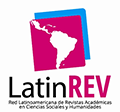Las redacciones de papel e Internet. Convergencia: un camino hacia el futuro
DOI:
https://doi.org/10.22235/d.v0i14.316Resumo
Las redacciones de los diarios viven modificaciones en un tiempo de revolución digital, que varios autores coinciden en definir como la más importante desde la imprenta de Gutenberg. Los medios están acostumbrados a los cambios. Los historiadores británicos Asa Briggs y Peter Burke afirman que los medios deben ser vistos como “un sistema en cambio perpetuo” y agregan que esas modificaciones han tenido “importantes consecuencias sociales y culturales”. Los diarios vivieron el advenimiento de la radio, la radio el de la televisión y la televisión el de Internet. Y, a diferencia de lo que muchos futurólogos pronosticaron, ni los diarios desaparecieron por la radio ni la radio por la televisión. Al contrario, los medios convivieron. Hoy es Internet la supuesta amenaza. Sin embargo, los periódicos –que hasta hace un tiempo tenían sus sitios web relegados– parecen apostar al otrora hermano menor. No lo hacen porque sí: los diarios viven en la incertidumbre. Para adaptarse apuestan a reorganizar el corazón de los diarios: la redacción. Llegó la convergencia de redacciones de papel e Internet; es un camino hacia el futuro. En este artículo, la autora analiza experiencias y plantea las preguntas más fundamentales para pensar este tema.
Palabras clave: convergencia y cambio en las redacciones, prensa digital y en papel periodismo digital, diarios, producción periodística, edición periodística.
Editorial departments of newspapers are going through times of change amidst the digital revolution which ome authors catalogue as the most important since the Gutenberg press. The media are used to changes. British historians Asa Briggs and Peter Burke say that the media have to be perceived as “a system in perpetual change” and add that these modifications have had “important social and cultural consequences”. Newspapers have seen the advent of the radio, radio of TV and TV of the Internet. Despite the predictions of many futurologists, neither newspapers have disappeared because of the radio, nor radio with TV. On the contrary, they coexist together. The Internet is today a sudden threat. Nevertheless, newspapers –which up until recently had their websites in a relegated position– seem to begin to bet their stakes for their younger sibling. Newspapers live in uncertainty. In order to adapt they try to reorganize the heart of their business: the editorial department. These are times of convergence of the print and web editorial departments, it's a time to the future. In this article the author analyzes different experiences and raises key issues to approach the topic.
Key words: convergence and change at the editorial departments, digital and paper media, digital journalism, newspapers, journalistic production, journalistic edition.
Downloads
Referências
Briggs, A., Burke, P. (2006). A social history of the media. From Gutenberg to the Internet. Cambridge: Polity.
Curley, R. (2007). Envisioning the newspaper 2020. World Association of Newspapers.
Deuze, M. (2005). What is multimedia journalism? Journalism Studies, 5. Recuperado de http://dx.doi.org/10.1080/1461670042000211131
Deuze, M. (2005). What is multimedia journalism?. Journalism Studies, 5, 143. Recuperado de http://dx.doi.org/10.1080/1461670042000211131
Franco, G., Guzmán, J.C., Romero, M. (2007, agosto 14). Online newspapers in Latin America: Latest trends in staffing, content and revenue. Poynter online. Recuperado de www.poynter.org/content/content_view.asp?id=124337
García, M. R. (2007). No better time for storytelling: news gathering in a multiplatform world. Envisioning the newspaper 2020. World Association of Newspapers.
ICFJ emphasizes the importance of journalists training. (2010, octubre 8). Editorsweblog. Recuperado de http://www.editorsweblog.org/multimedia/2010/10/icfj_emphasizes_importance_of_journalist.php# more
Jenkins, H. (2008). Convergence culture. La cultura de la convergencia de los medios de comunicación. Barcelona: Paidós.
Keller, B., Nisenholtz, M. (2005, febrero 8). NYT newsroom integration memo. Poynter Forums. Recuperado de www.poynter.org/forum/view_post.asp?id=10027
Plambeck, J. (2010, abril 26). Newspaper circulation falls nearly 9% . The New York Times.
Salaverría, R., Negredo, S. (2009). Integrated journalism. Media convergence and newsroom organization, Barcelona: Sol 90.
Saltzis, K., Dickinson, R. (2008). Inside the changing newsroom: journalists ́responses to media convergence. Aslib proceedings: new information perspectives, 60 (3), 220.
The worlds news future and change study. (2010, diciembre 6). World Association of Newspapers. Recuperado de http://www.wan-press.org/article18740.html
Unión Internacional de Telecomunicaciones de Naciones Unidas. (2010). The World in 2010. Recuperado de http://www.itu.int/ITU-D/ict/material/FactsFigures2010.pdf
World Press Trends: Advertising revenues to increase, circulation relatively stable. (2010, agosto 4). World Association of Newspapers. Recuperado de http://www.wan-press.org/article18612.html
Downloads
Publicado
Como Citar
Edição
Secção
Licença
Direitos de Autor (c) 2011 Dixit

Este trabalho encontra-se publicado com a Creative Commons Atribuição-NãoComercial 4.0.
A partir da edição 32, todo o conteúdo está licenciado sob a Licença Internacional Creative Commons Attribution 4.0 (CC BY 4.0).
As edições número 29-31 estão sob a Licença Creative Commons Atribuição-NãoComercial 4.0 Internacional.
Os conteúdos correspondentes às edições número 28 e anteriores estão sob a Licença Creative Commons Atribuição-NãoComercial-CompartilhaIgual 4.0 Internacional.


















